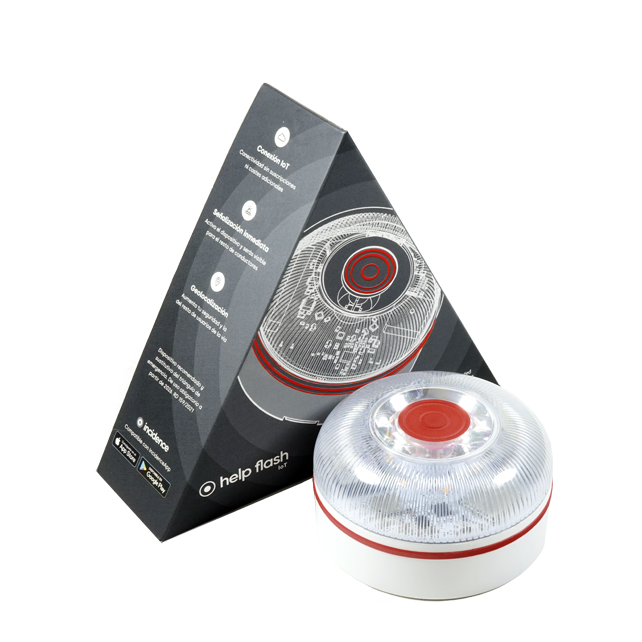What is the v16 emergency light?
The V16 emergency light is a high-intensity light signaling device used to signal an emergency situation in a vehicle . This flashing yellow light is activated by simply pressing a button and is positioned at the top of the vehicle's window, without having to leave the car. This is a very useful tool for roadside emergencies , as it allows drivers to alert other vehicles of their presence and signal that they are in a dangerous situation. Some of these signs feature 3.0 connectivity to establish a direct connection with the DGT, allowing other road users to know the location of the incident. Additionally, if the beacon is compatible with the Incident App, it is also useful for emergency services, helping them quickly reach the scene of the incident.Mandatory nature of the v16 signal
One of the most important moments in terms of road safety is when a car is stopped on the road , whether as a result of an accident or a breakdown. Until a couple of years ago, the safety triangle was the only valid way to alert other drivers to this situation. However, since the incorporation of the V16 sign into the traffic regulations, it is no longer necessary to display warning triangles to signal an accident or breakdown.Safety triangles: the accident warning device of the 90s
These triangles were established as a measure to improve road safety and ensure the protection of drivers and passengers in the event of accidents or breakdowns . The triangles were to be placed on public roads in case of emergency, at a distance of 50 meters from the vehicle in cities and 100 meters on highways, both in front and behind. However, many of the most serious road accidents today are caused by collisions that occur while the brakes are being installed. It is precisely this circumstance that has led the DGT to eliminate their use in favor of a new system .Current situation: coexistence of safety triangles and lights v16
Since July 1, 2021, the use of both safety triangles and hazard warning lights v16 is permitted. Therefore, all drivers on Spanish roads are responsible for carrying either traditional triangles or a v16 emergency warning sign in their vehicles. The fine for not carrying one of them in the vehicle, or for not using them in the event of a stoppage on the road, carries fines that carry both a monetary penalty of up to 200 euros and the loss of points on the license . However, although the law establishes these two possibilities, the precedents and the future regulatory change lead us to believe that the best solution is the V16 signal, as it allows other vehicles to be signaled without having to leave the vehicle or move, with the risks that this entails.Regulatory change in January 2026
This situation will change drastically starting January 1, 2026. At this time, a new law will come into force requiring drivers to carry a geolocated V16 sign in their vehicle and to use it in the event of a stop on the road. This signal, in addition to emitting a powerful light that makes the stopped vehicle visible, automatically connects to the DGT to warn other drivers that there is a vehicle stopped at a specific point on the road . Therefore, and despite the fact that at this time the use of triangles and the v16 signal (geolocable or not) is admitted interchangeably, it is advisable to acquire a system that has geolocation capacity , which will be valid with the new regulations of 2026. An example of this type of system is the Help Flash IoT sign . It uses NB-IoT technology, which allows other road users to know your location in the event of an emergency.






